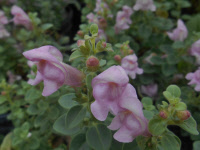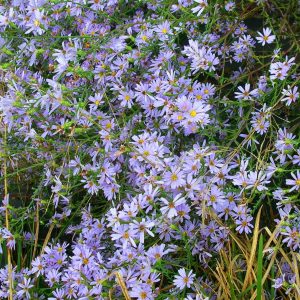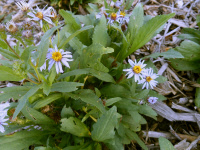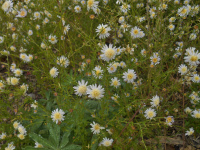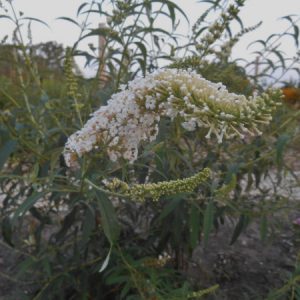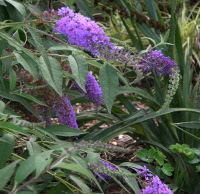Archives
Showing 17–24 of 164 results
-
Antirrhinum hispanicum ‘Roseum’ syn. A. glutinosum Perennial snapdragon, Spanish snapdragon Z 5-8
Rose pink, with yellow above the lower lip, snapdragon-shaped blooms in spring, repeats in fall. Fuzzy, silver-grey foliage
ARCHIVED
Note: This is a plant not currently for sale. This is an archive page preserved for informational use.
Rose pink, with yellow above the lower lip, snapdragon-shaped blooms in spring and repeats in fall. Fuzzy, glaucous, silver-grey foliage. Excellent for places you want low-growing, drought tolerant flowers.
Size: 12” x 2’
Care: sun in well-drained soil
Native: Spain & Morocco
Wildlife Value: deer resistant, attracts hummingbirdsDescribed in 1852 in Pugillus Plantarum Novarum Africae Borealis Hispaniaeque Australis
-
Asclepias verticillata Whorled milkweed Z 4-10 POISON
Fragrant flat-topped clusters of many small white flowers atop single stem surrounded by narrow, grass-like leaves. Blooms July through October.
ARCHIVED
Note: This is a plant not currently for sale. This is an archive page preserved for informational use.
Fragrant flat-topped clusters of many small white flowers atop single stem surrounded by narrow, grass-like leaves. Blooms July through October.
Size: 12-30” x 12-24” spreading
Care: sun to part shade in moist well-drained to well-drained soil
Native: all US, Wisconsin native
Wildlife Value: deer & rabbit resistant. Bees & butterflies eat nectar. Host for Monarch caterpillars.
Size: root used to induce sweating for Choctaw, Chickasaw and Creek nativesCollected by 1753. Grown at America’s 1st botanic garden, Elgin Botanic Garden 1811.
-
Aster azureus syn. Symphyotricum oolentangiense var. oolentangiense Sky blue aster Z 3-9
Showy true cornflower-blue daisies in August-October
ARCHIVED
Note: This is a plant not currently for sale. This is an archive page preserved for informational use.
Showy true cornflower-blue daisies in August-October
Size: 2-3’ x 2’
Care: full sun to part shade in any soil
Native: NY to SD, FL to TX incl. WI
Wildlife Value: Aster species are nectar sources for many butterflies – Checkered white and Checkered skippers, Spring azure, Pearl crescent, Buckeye, Painted lady, Fiery skipper, Sachem, Sleepy orange, Silver-spotted skipper and Monarch.Collected before 1889.
-
Aster sibiricus syn. Eurybia sibirica Siberian aster, Arctic aster Z 3-9
Lavender daisies from late-summer into fall
ARCHIVED
Note: This is a plant not currently for sale. This is an archive page preserved for informational use.
Lavender daisies from late-summer into fall, valuable for long-blooming and short size
Size: 6-10” x 15-24” Care: sun in well-drained, to moist well-drained, acidic soil
Native: NW US, Alaska, Canada, Arctic & Siberia
Wildlife Value: attracts butterfliesCollected by German plant hunter Johann Gmelin in Siberia before 1753
-
Asteromoea mongolica syn. Aster mongolicus or Kalimeris pinnatafida ‘Hortensis’ Japanese aster, Mongolian aster Z 3-9
Covered with petite double white daisies, blooming for months –late summer-fall
ARCHIVED
Note: This is a plant not currently for sale. This is an archive page preserved for informational use.
Covered with petite double white daisies with golden stamens blooming for months –late summer-fall.
Size: 2-3’ x 1-2’
Care: sun to part shade in well-drained to moist well-drained soil
Native: Japan
Awards: Georgia Gold Medal 1998 Taxonomists had trouble naming this one. First described in French Journal Nouv. Arch. Mus. Hist. Nat. in 1882. A favorite flower of the late garden writer Elizabeth Lawrence who traced it to the grounds of the old Oxford Orphanage in Oxford NC. (1942) -
Baptisia tinctoria Wild indigo, Horsefly Z. 3-9
Sweet saffron yellow pea-like flowers, July to September
ARCHIVED
Note: This is a plant not currently for sale. This is an archive page preserved for informational use.
Sweet saffron yellow pea-like flowers, July to September
Size: 2-3’ x 2-3’
Care: sun to part shade in dry to moist well-drained soil
Native: Ontario, Maine to MN S to GA, Wisconsin
Wildlife Value: Attracts butterflies.Baptisia is Greek meaning “to dye” referring to use of Baptisia australis as a substitute for indigo dye. Tinctoria means used in dying. For Cherokee it induced vomiting. They made a poultice to “stop mortification.” The root, held against teeth, remedied toothache. Iroquois used it to cure rheumatism and cramps in the stomach or legs. The Cherokee & Ojibwa used it for dye. Collected by John Banister in Virginia by 1692. Pressed specimen in Emily Dickinson’s herbarium.
-
Buddleja davidii var. alba White butterfly bush Z 5-9
Fragrant, honey-scented, large, white, arching spikes
ARCHIVED
Note: This is a plant not currently for sale. This is an archive page preserved for informational use.
Fragrant, honey-scented, large, white, arching spikes from summer through fall.
Size: 6’ x 4’
Care: Sun in well-drained soil
Native: Central & Western China
Wildlife Value: flowers very fragrant, attracts many butterflies, excellent cut flowerBuddleja named to honor Reverend Adam Buddle, Vicar of Farmbridge in Essex and botanist. (1662-1715) Davidii honors Fr. Armand David a French missionary who noticed it. White flowered variety was described by Ernest Henry “Chinese” Wilson in 1913.
-
Butterfly Garden for sun
Butterfly Garden for sun
ARCHIVED
Note: This is a collection not currently for sale. This is an archive page preserved for informational use.
Butterfly Garden for Sun Size : Height x width* Bloom color
3 Agastache foeniculum – Anise hyssop 2-3’ x 12” purple
1 Asclepias incarnata – Swamp milkweed 3’-4’ x 2-3’ pink
1 Aster novae angliae – New England aster 3-4’ x 24” pink or purple
3 Chasmanthium latifolium 36” x 24” green
1 Liatris spicata – Blazing star 2-3’ x 18” purple
1 Lobelia siphilitica – Cardinal flower 3’ x 12” blue
1 Phlox paniculata – Garden phlox 4’ x 2’ spreading magenta
1 Monarda fistulosa – Beebalm 3-4’ x 2’ purple
3 Rudbeckia fulgida – Black-eyed susan 30”x 18” yellow
1 Sedum ‘Autumn Joy’ 30” x 12” pink
3 Verbena bonariensis (reseeding annual) 3-4’ x 6” purple
3 Zizia aurea – Golden alexander 30″x 24″ yellowAll plants are perennials except Verbena bonariensis which is an annual that reseeds.
If planted together in one garden these make a 31 square foot garden.
*Most of these plants get wider over time by spreading roots or by self-seeding .
22 plants for $201.28. Would be $236.80 if purchased separately. You save $35.52.
If you plan on coming to the Nursery to purchase this collection, please give us at least 24 hours notice to prepare the collection for you.

